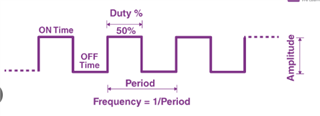Other Parts Discussed in Thread: HALCOGEN
Tool/software:
Dear All.
As the title says, I want to use the N2HET1[31] pin of tms570ls3137 as a PWM pin to send data to the FPGA.
I enabled HET1->Pwm0-7 -> PWM0 for the Halcogen of tms570ls3137, and set the HET pin to 31.
And I called and executed the PWM API as follows.
pwmStart(hetRAM1, pwm0);
for(uint8 i = 0; i < size; i++){
pwmSetDuty(hetRAM1, pwm0, test_telegram_table[id].data[i]);
}
pwmStop(hetRAM1, pwm0);
Actually, this seems to be the end for tms570ls3137,
but the problem is that I don't know how to implement it in FPGA.
1. If I do it according to the example source above, will the data go out as a PWM signal from tms570?
2. How do I recognize PWM data in FPGA?
Do you have something like a PWM datasheet?
It's a bit difficult because I have to implement it again according to the tms570 specifications in FPGA.
Can you help me?
Best Regards,
IBLEE


